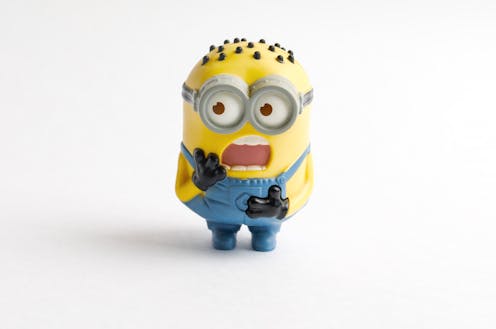
The 2024 Paris Olympics kicked off with hand-wringing about whether a drag queen banquet scene with a nude blue man at its centre was a mockery of the Last Supper.
The director of the scene’s statement that the tableau referred to a painting of the Feast of Dionysus seemed to do nothing to deter cardinals, bishops, pastors and layfolk alike from rushing to their keyboards to express outrage. Apparently, for instance, according to one such vlogger, the opening ceremony was “the biggest blasphemy, sacrilege, and ridicule of the Christian faith the world has ever seen”.
After all this controversy, perhaps you share my surprise, then, to find out that some Christians are putting minions on the cross in the name of evangelism.
Minions are irritating – or cute, depending on your perspective – little yellow cartoon characters who originated in the Despicable Me film franchise. And they seem to be everywhere you look, especially if you have any children in your life. These strange little creatures are known for their mischievous nature and, in particular, their commitment to assisting cartoon villains.
So why would those Christians making images of a minion on the cross not consider it a blasphemy or mockery of one of the most significant moments in Christian theology?
Parodies galore
Parodies of Christianity have been around for thousands of years. In fact, the earliest representation of the crucifixion found – the famous Alexamenos Graffito, a piece of Roman graffiti from around the year AD200 – was intended to offend. The image depicts a donkey-headed figure with a naked backside hanging on a cross. It was likely intended to mock the crucifixion. The accompanying text on the image reads: “Alexamenos worships his God.”
Just as there have been numerous artistic and cultural reimaginings of the Last Supper, the crucifixion is often the subject of imitation and even parody. Superman is a widely recognised Christ figure. The crucifixion appears in WWE wrestling matches.
Madonna performed her song Live to Tell at a 2006 concert near Vatican City while crucified on a giant mirrored cross in order to draw attention to the Aids crisis. And sport stars are regularly represented as Christ figures, as examples of glorious masculine suffering.
Often, these representations make important claims about our own society or make us think more deeply about social or political issues to do with suffering. It is hard to say that a minion on a cross fully captures that same depth of feeling.
Minions on the cross
The phenomenon of the minion on the cross seems to have started in 2021 with digital artist Américo Cruz, but it wasn’t until May of 2024 that the image was used to evangelise.
The wording on hundreds of TikTok, YouTube, Instagram and Facebook videos appears to originate with TikTok pastor @pastorjoshpan. In the videos, he and other social media users describe in almost loving detail the artistic rendering of the nails in the minion’s “three little fingers” or the crown of thorns on the minion’s head. The image is an opportunity for a fairly obvious twist at the end of the videos: a minion didn’t die for your sins – Jesus did.
There is no deep symbolism at work here. Unlike other representations of Christian iconography, where meaning can be inferred from the position of, say, Tony Soprano or Homer Simpson at the centre of the Last Supper – or Superman in the shape of a cross – the minion crucifix exists solely for the algorithm.
Christian influencers are hoping that the yellow creatures’ popularity (and more, the scandal of a minion on the cross) will help boost their message and convince viewers to stick around rather than scroll past.
These are devout Christians using a cartoon character in the place of Christ on the cross, without any concern that this might be blasphemous or disrespectful. In this case, content creators using the image of a minion on the cross are even aware of – and capitalising on – the potential for this image to shock or offend.
Given how commonplace parodies and reimaginings of Christianity are, including among Christians, perhaps Olympics opening ceremony performer Hugo Bardin was right in pointing out that the issue with the Paris Olympics tableau was not the reproduction of a what looked like a Christian event or artwork. Rather, he said, “What bothers people is that queer people are reproducing it.”
M.J.C. Warren does not work for, consult, own shares in or receive funding from any company or organisation that would benefit from this article, and has disclosed no relevant affiliations beyond their academic appointment.
This article was originally published on The Conversation. Read the original article.







